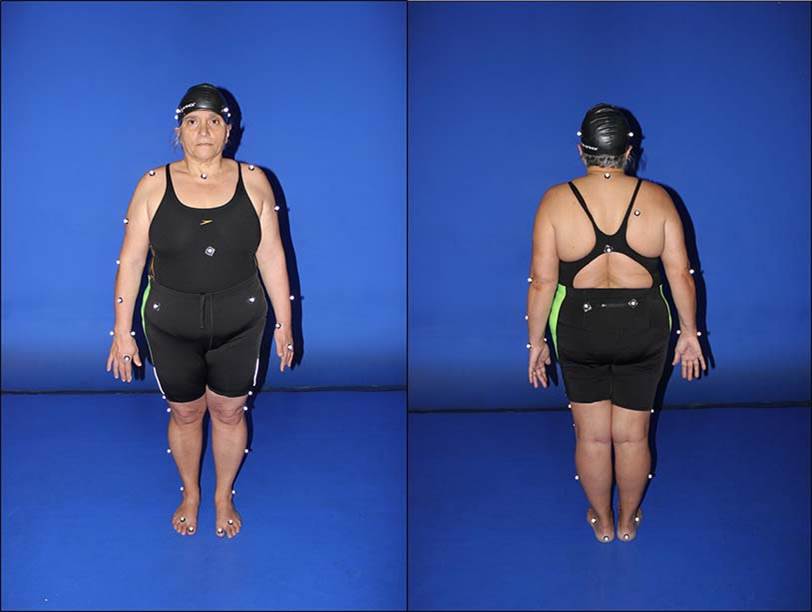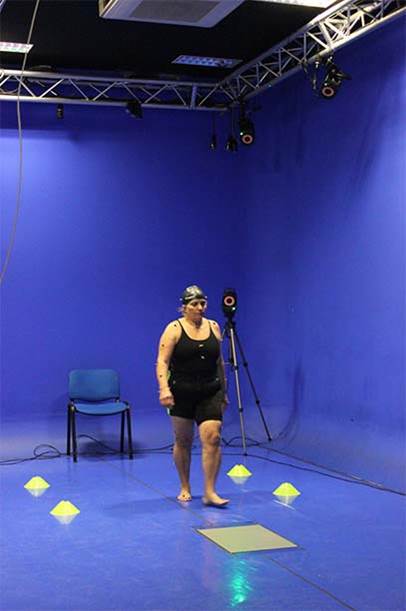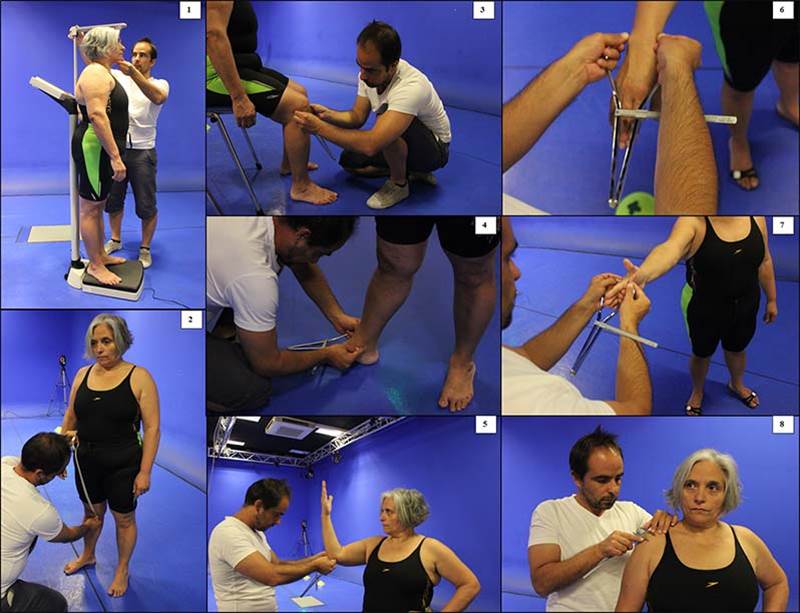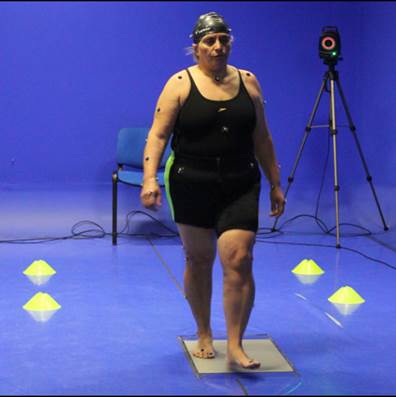Gait Kinematics and Kinetics
A 3D gait analysis was performed in order to assess gait biomechanical variables (gait speed; centre of mass velocity; heel antero-posterior velocity at heel strike; cadence; stride length; percentage of stance phase; percentage of double support phase; percentage of the first double support phase; percentage of the first single support phase; percentage of the second double support phase; percentage of the second single support phase; minimum toe clearance; ankle moment of force peak; ankle power peak, dynamic joint stiffness of the ankle).
The motion capture, performed at MovLab (Universidade Lusófona de Humanidades e Tecnologias), was supported by Vicon® Motion Capture MX System (9 MX infrared cameras; Oxford metrics, UK; 7×1.3 MP; 2×2.0 MP) and synchronized with an Advanced Mechanical Technology Inc. (AMTI) force plate (model BP400600, AMTI, Watertown, MA, USA). Kinematic data was recorded at 200 Hz and force plate recorded the ground reaction force data at 1000 Hz.
It was always the same investigator that collected anthropometric data and placed the spherical reflective markers on the anatomical landmarks, according to the PlugInGait full-body model (Vicon Motion Systems, UK).




